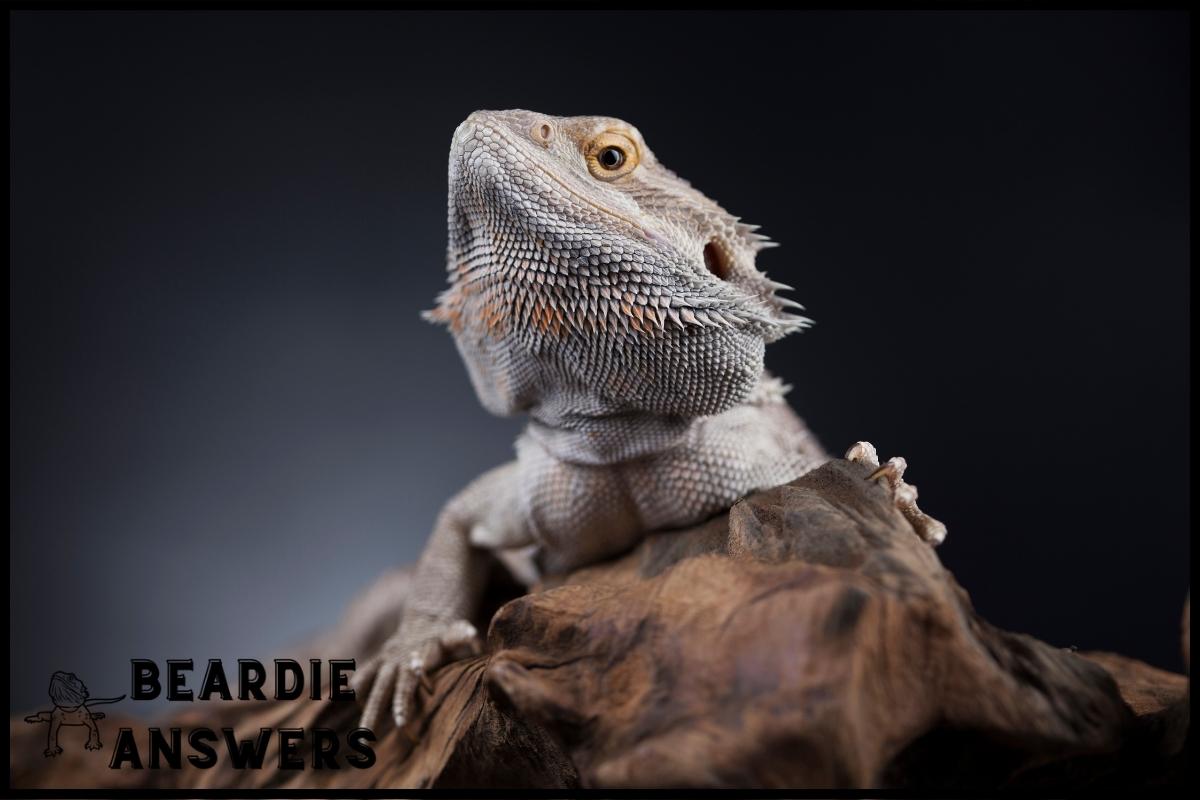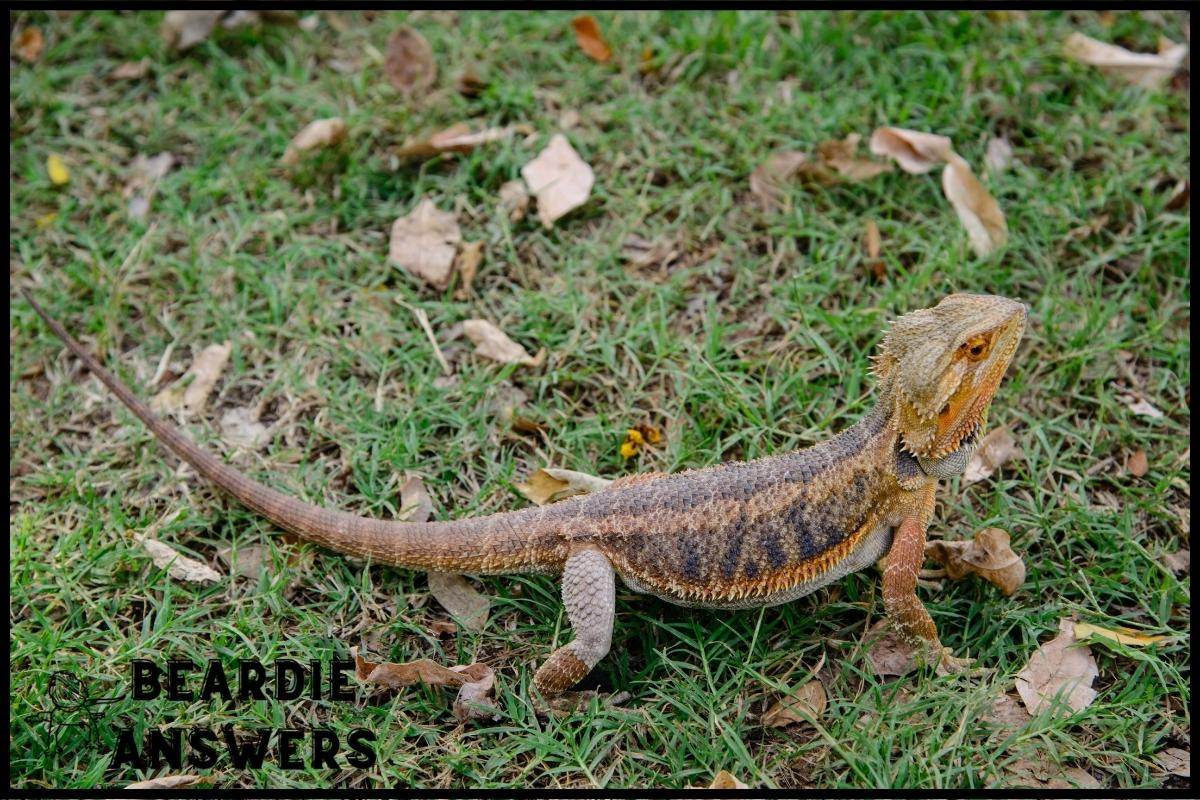Grasshoppers are a nutritious and protein-rich food source that can be included in a bearded dragon’s varied diet. However, owners must ensure that the grasshoppers are not contaminated with pesticides, herbicides, or other chemicals that can harm their pet’s health. It is also crucial to balance their diet with other essential nutrients and vitamins.
A feast fit for a king! That’s what bearded dragons have when they eat grasshoppers.
In this article, we’ll explore the answer to one of nature’s most curious questions: Can a bearded dragon eat grasshoppers? The good news is that the answer is yes – and it can form part of a varied diet for these lovable lizard friends.
Read on to learn more about why beardies love their crunchy bug snacks, how much you should feed them, and why variety is key in keeping your pet healthy and happy.
What You'll Learn
Benefits Of Eating Grasshoppers
Grasshoppers may be small, but they pack a powerful punch when it comes to the benefits of feeding them to bearded dragons. Alluding to popular culture, one might say that grasshoppers provide “the power and the glory” for this beloved reptile species.
Not only do these critters offer excellent nutrition and dietary variety, they are also gentle on the environment and relatively safe if certain precautions are taken. For starters, grasshoppers contain high levels of protein which makes them an attractive food choice for beardies looking for good sources of nutrition. Additionally, offering different types of insects provides much needed diet variation and allows owners to prevent boredom with mealtime.
Furthermore, gut health can be improved by incorporating various insect varieties as part of regular feedings because this helps reduce issues due to inactivity or overeating from too many similar meals. Lastly, safety is always important so make sure all insects consumed are free from pesticides and other environmental contaminants that could harm your pet.
Ensuring a healthy mix of foods is vital for maintaining optimal health in reptiles like bearded dragons. By adding grasshoppers into the menu you not only increase nutritional value but also add excitement to their daily routines – two essential components for keeping these creatures happy and content!
With just a few simple steps we can help our scaly friends get the necessary nutrients while helping keep our environment clean at the same time.
- Ensure only pesticide-free grasshoppers are fed
- Offer varied sizes based on age/size of dragon
- Feed according to individual needs (smaller portions more often)
- Supervise consumption closely
Taking these considerations into account will give both you and your dragon peace of mind knowing their needs have been met without compromising safety along the way. So let’s move onto how best to feed a bearded dragon grasshoppers!
How To Feed A Bearded Dragon Grasshoppers
When feeding a bearded dragon grasshoppers, it’s important to stick to certain techniques. Wild-caught prey should be avoided, as they can carry parasites or diseases that are harmful for your pet. Instead, purchase pre-packaged insects from a reliable source and be sure to check the portion sizes suggested on the packaging.
Gut loading these insects is essential; this process involves providing high nutrient food items such as vegetables in order for them to pass those nutrients onto your beardie when consumed. Additionally, calcium supplementation may also be necessary depending on how often you feed them grasshoppers.
It’s best to consult with an experienced reptile veterinarian before introducing grasshoppers into your dragon’s diet. They will provide insight regarding potential risks associated with eating this type of prey and any other dietary advice based on your particular situation.
With proper preparation and monitoring, you can ensure that your bearded dragon gets all the nutrition they need while still enjoying their favorite treat! Moving forward, let’s look at what potential risks exist when consuming grasshoppers.
Potential Risks Of Eating Grasshoppers
Eating grasshoppers can have potential risks associated with them. Disease transmission, pesticide residue and insect allergies are a few of the common concerns when feeding bearded dragons grasshoppers.
| Risk | Description | Prevention |
|---|---|---|
| Disease Transmission | Diseases such as salmonella can be passed from wild caught insects to beardies that consume them. | Purchase commercially bred insects or feed other safe sources of food like vegetables, fruits and supplements. |
| Pesticide Residue | Grasshoppers may contain dangerous levels of pesticides if they were sprayed in their habitat. | Feed only wild-caught grasshoppers collected from uncontaminated areas far away from any kind of farming activity. |
| Insect Allergies | Some reptiles may develop an allergic reaction to certain types of insects like grasshoppers due to proteins present on them. | Monitor closely for signs of swelling, labored breathing, excessive scratching or licking at the same spot after eating a new type of bug. |
| Calcium Deficiency | Eating too many bugs high in phosphorus content compared to calcium can lead to a deficiency in this important mineral which is essential for proper growth and development. | Balance meals by offering a variety of protein sources rich in both minerals (calcium/phosphorus). Supplementing calcium regularly is also beneficial. |
| Habitat Contamination | Wild-caught grasshoppers should never be taken directly from polluted areas since it could cause harm not only to the reptile but also its environment through contamination issues with heavy metals and toxins found on these locations . | Before collecting wild-caught food items always make sure you research about the source’s safety status beforehand so no unexpected health hazards arise afterwards.. |
Overall, there are some risks associated with providing grasshoppers as part of your pet’s diet. It is best practice to take necessary precautions before introducing any type of new protein source into their meal plan. Moving on from this topic, let’s explore other options available for bearded dragons…
Other Protein Sources For Bearded Dragons
In addition to grasshoppers, bearded dragons have a variety of other proteins sources they can enjoy. They are voracious eaters that love the crunch and taste of insects as food! Mealworms provide excellent nutrition for them, as do worms such as waxworms and silkworms – all with their own unique flavor profiles.
Safety is paramount when offering these invertebrates as food; ensuring they come from reputable breeders and vendors, who inspect for pesticides or contaminants. Crickets are another popular meal for these lizards, although special attention should be given to how often crickets are fed due to their higher fat content.
Lastly, locusts offer high levels of health benefits such as calcium, protein and fiber – making them an ideal choice in moderation. The next step is understanding what nutritional guidelines need to be followed to ensure your dragon stays healthy while feasting on its favorite treats!
Nutritional Guidelines For Bearded Dragons
It is important to remember that grasshoppers should only be a small part of your bearded dragon’s diet. Treats such as insects, including grasshoppers and mealworms, should make up no more than 10% of their overall diet.
The rest of the diet should consist of leafy greens like collard greens or dandelions which provide calcium sources for your reptile. When feeding treats to your bearded dragon, it’s best practice to gut load them with high-calcium foods first so they can get all the necessary vitamins and minerals from their food.
Bearded dragons also need plenty of heat sources in order to digest their food properly, so you will want to invest in either basking lights or an under tank heater if you don’t already have one.
Mealworms are usually easier to find than grasshoppers and generally provide more nutrition when compared side by side. However both offer unique benefits and variety should always be kept in mind when deciding on what type of insect protein source would work best for your beardie.
Keeping this balance between their regular diet and occasional treat meals helps ensure that your pet is getting everything they need nutritionally while still providing stimulation through different types of foods.
Conclusion
It’s no surprise that bearded dragons can eat grasshoppers – after all, they were born for it! As a pet owner, you should be aware of the potential risks involved in feeding your beloved dragon these crunchy critters. While they offer some nutritional benefits and make a tasty snack, too much could lead to an upset stomach or other digestive issues.
But hey, don’t let me stop you from treating your scaly friend to this classic reptile favorite every once in awhile. Just remember to pay attention to portion sizes and always monitor their health closely.
With proper nutrition being so important for the well-being of our lovable lizard companions, there are plenty of other protein sources out there besides grasshoppers. From crickets and mealworms to wax worms and earthworms, the options are practically endless! And as long as you adhere to the general dietary guidelines for bearded dragons, I’m sure you’ll find something suitable for your scaled pal.
So if you’re looking for a way to add variety to your beardie’s diet without sacrificing any of its nutritional value, look no further than grasshoppers (or one of those other delicious alternatives!). In doing so, you not only give them something fun and yummy to nibble on but also ensure that their overall diet is balanced and healthy.
So go ahead—treat yourself and treat your dragon today!

Hi! My name is Bryan, I am the “one behind the words” here are BeardieAnswers.com. I believe that providing quality care and nutrition is the best way to ensure the health of your pet. Every beardie is special and deserves the best care and attention. If you have questions about your bearded dragon, please don’t hesitate to ask! View My Full Author Page




